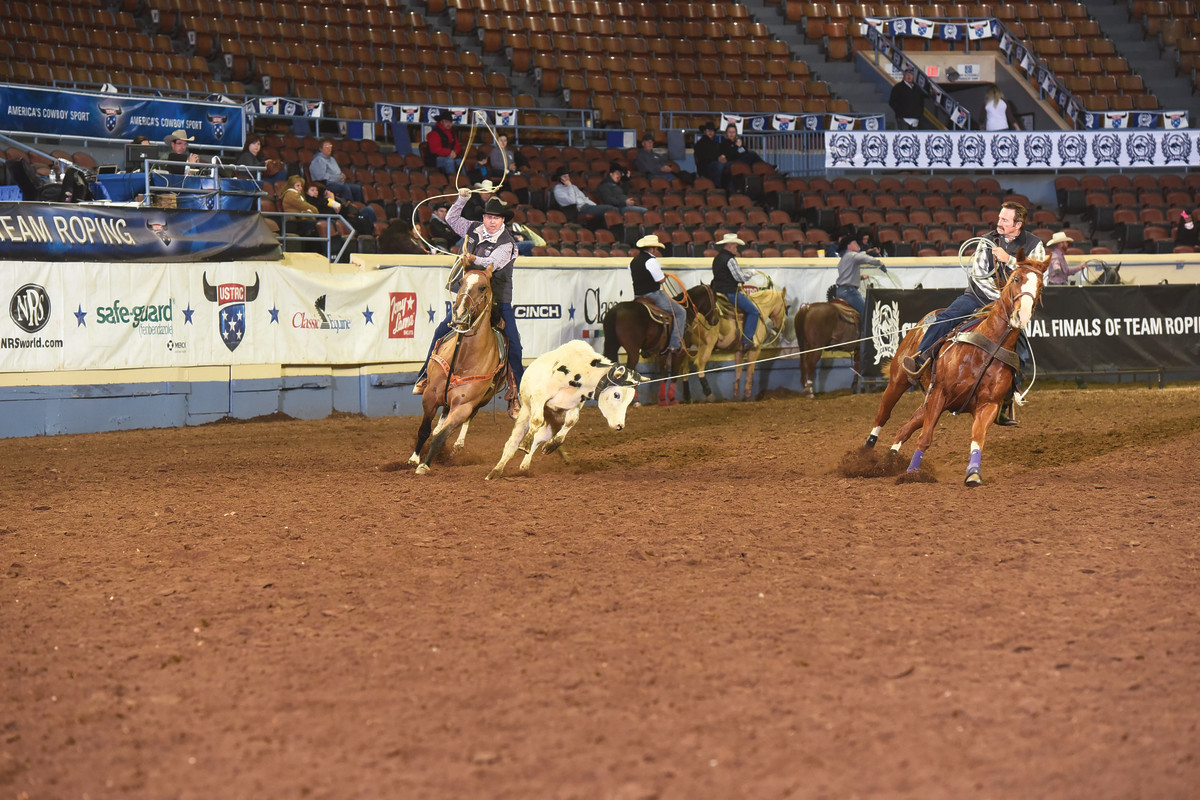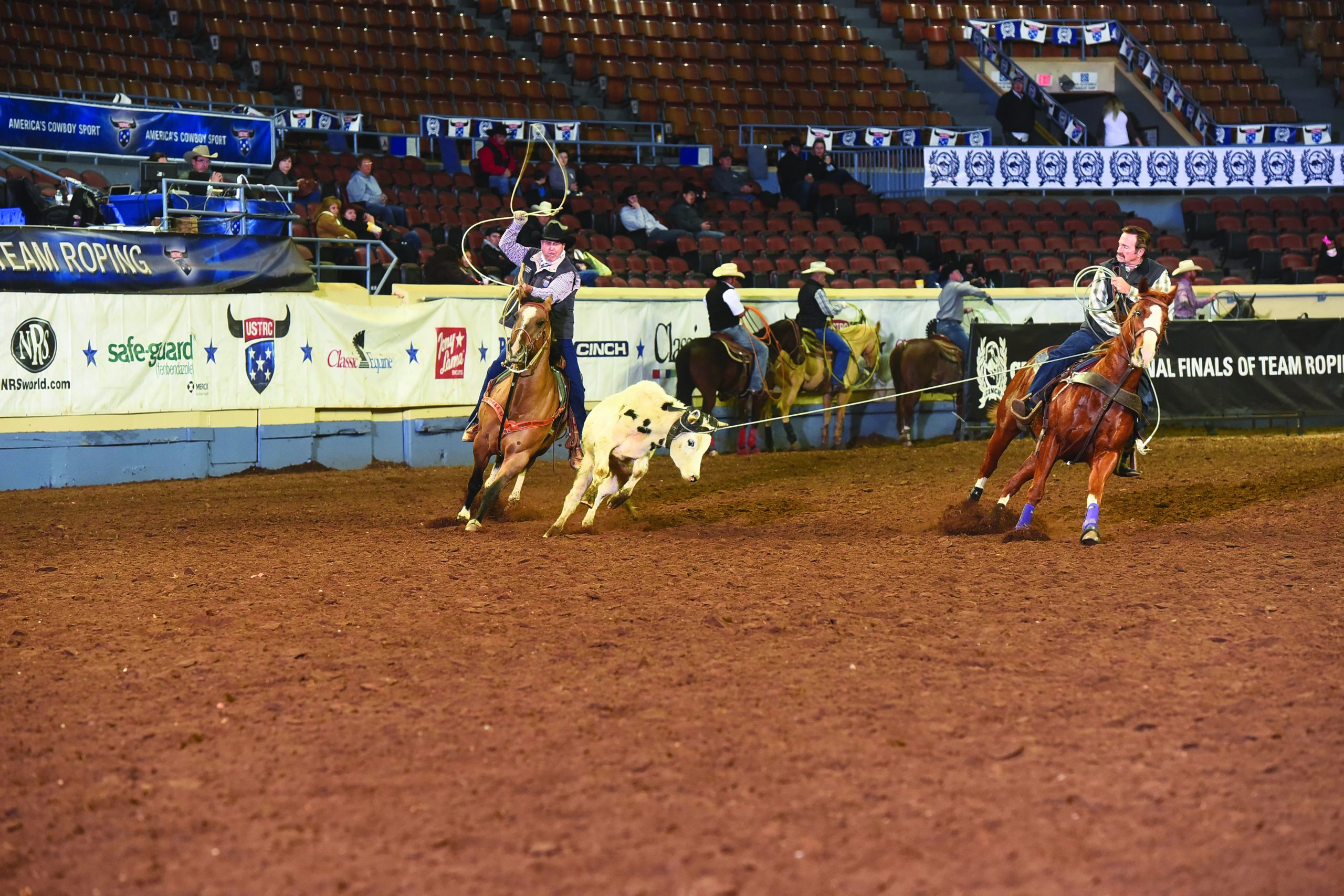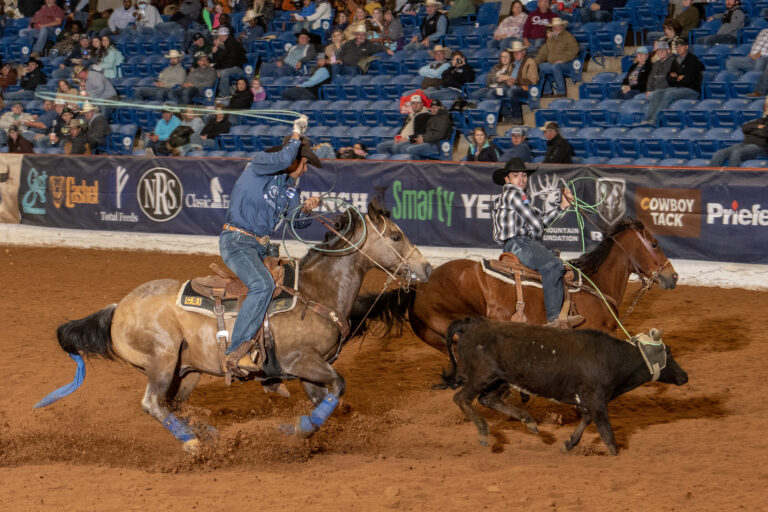By the time Denny Gentry and roping’s computer whiz Gary Poythress combined their lists to create the earliest iteration of the number-system’s database in 1990, they had over 10,000 ropers on file.
Poythress put those first ropers into the system in alphabetical order starting at 1,000, so the original members of the USTRC have four-digit numbers, listed mostly alphabetically from there.
Many of them attended the first ever National Finals of Team Roping in Guthrie, Oklahoma—a roping that hosted 650 contestants who came to see what the talk was all about. That first edition paid out $185,000 and turned heads across the roping community, helping shape what would become today’s massive team roping industry.
Jim Brinkman, 60, Nebraska
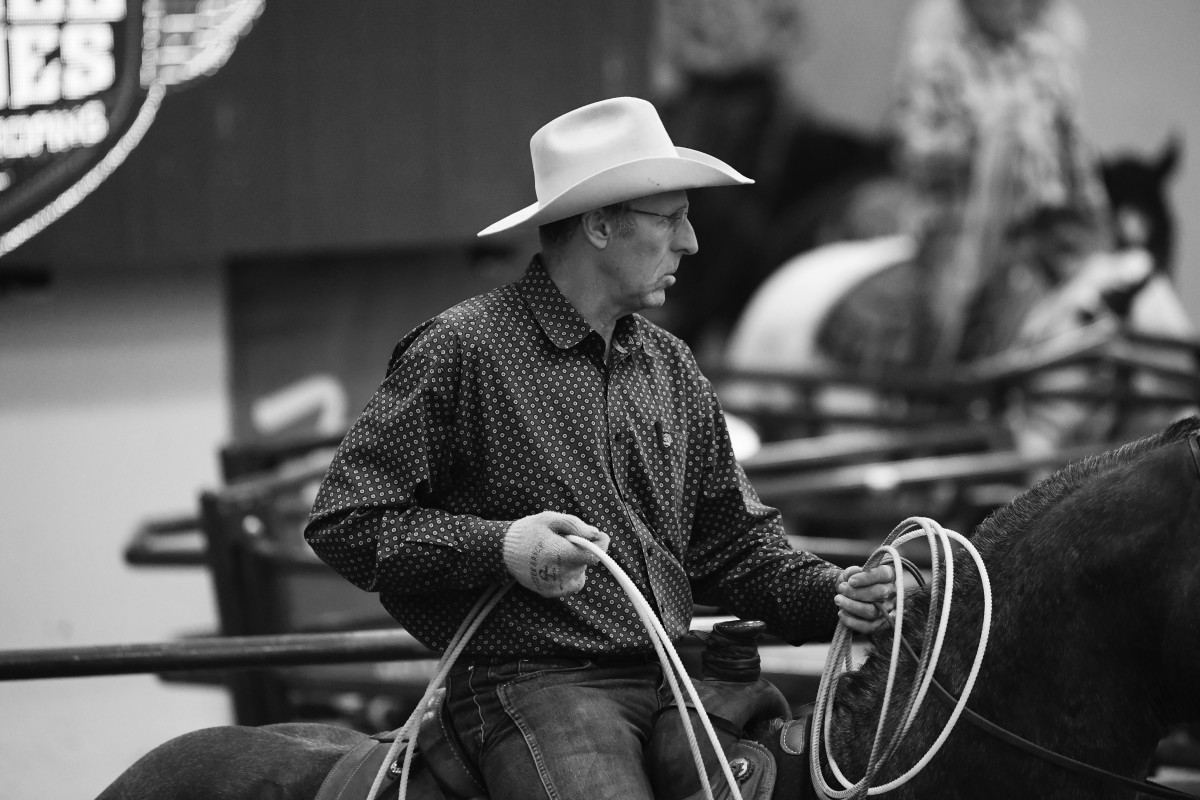
In the late 1980s, Jim Brinkman remembers having a Fourth-of-July roping in a hay meadow at home in Nebraska, in a town with just over 90 people within its limits. The roping would draw some 300 teams, but some ropey young guns named Speed Williams and Rich Skelton would show up, take everyone’s money, and head to the next one.
“That was before the number system,” Brinkman said. “You’d be lucky if a local placed. It was fun to see them—and man they roped good—but we didn’t stand a chance.”
So Brinkman, who now runs the famous Pitzer Ranch horse program, was quickly intrigued by the USTRC and its promise of leveling the field for ropers from across the country.
“I am pretty sure I went to the first US Finals,” said Brinkman, who also helped with the numbering committee in Nebraska in the early years. “We were so local, we didn’t know how good or how bad we roped. I entered the Open with Warn Horner. It was fast cattle, and they used the whole Lazy E. You’d run clear to the scoreboard before you ever got close enough to throw it. The chute was underneath the deck there. You’d whip and ride all the way to the end of it. It was the first good, big roping I’d ever been to.”
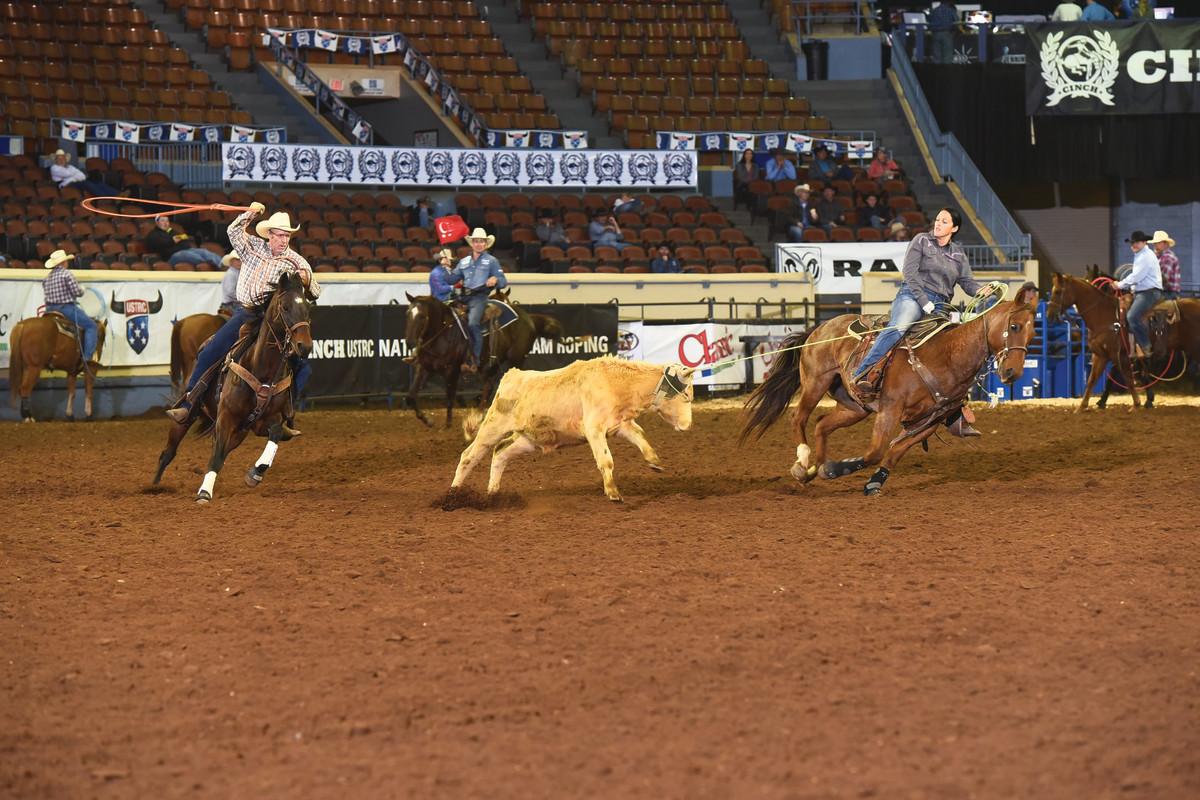
Brinkman found out he had a lot to learn after that first trip to Guthrie, but what he did have was the horsepower on which to compete, no matter the conditions. The Pitzer program, founded by Howard Pitzer in 1945, stood the legendary Two Eyed Jack and Mr Baron Red and, today, produces horses that excel at every level of the sport.
“It took until the early 2000s before the roping world woke up and realized they needed a better horse. Now we sell geldings for $30,000 to $40,000 without much problem. We’ll probably run 250 geldings a year and average $10,000 on them. The rope horse business has changed it a lot,” Brinkman said.
Wayne Baize, 67, New Mexico
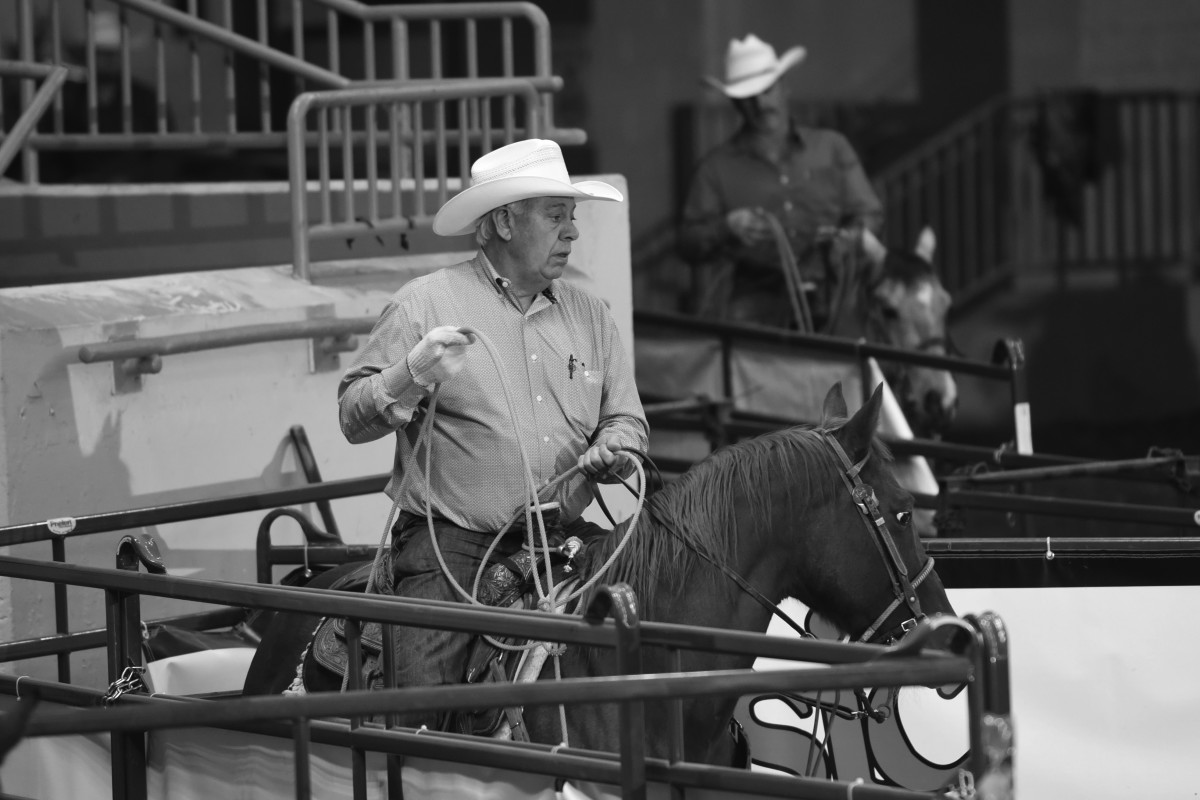
These days, Wayne Baize is taking saddle orders for NFL stars like Pittsburgh Steelers’ quarterback Ben Roethlisberger and perhaps churning out more saddles each week than anyone else in the business (He estimates his Corriente Saddle Company letters 100 trophy saddles per week.) But back in 1990, a saddle company was just a pipe dream.
“The USTRC was unbelievable for the breeding programs to the hat industry to the boot industry and everything in between,” Baize said. “It was an unbelievable deal. That’s why I started the saddle company. The roping industry made us probably the largest saddle company in the world.
“I remember the first US roping I went to was in Albuquerque in the indoor building. I won second place and $2500 a man. Me and Bo Morris won second and I remember sitting on the bleachers dividing it, and I was like, HOLY COW are you kidding me?! Up until then the biggest roping I ever won was $500 a man. I remember thinking there’d never be another poor day.”
[READ MORE: The Evolution of Team Roping]
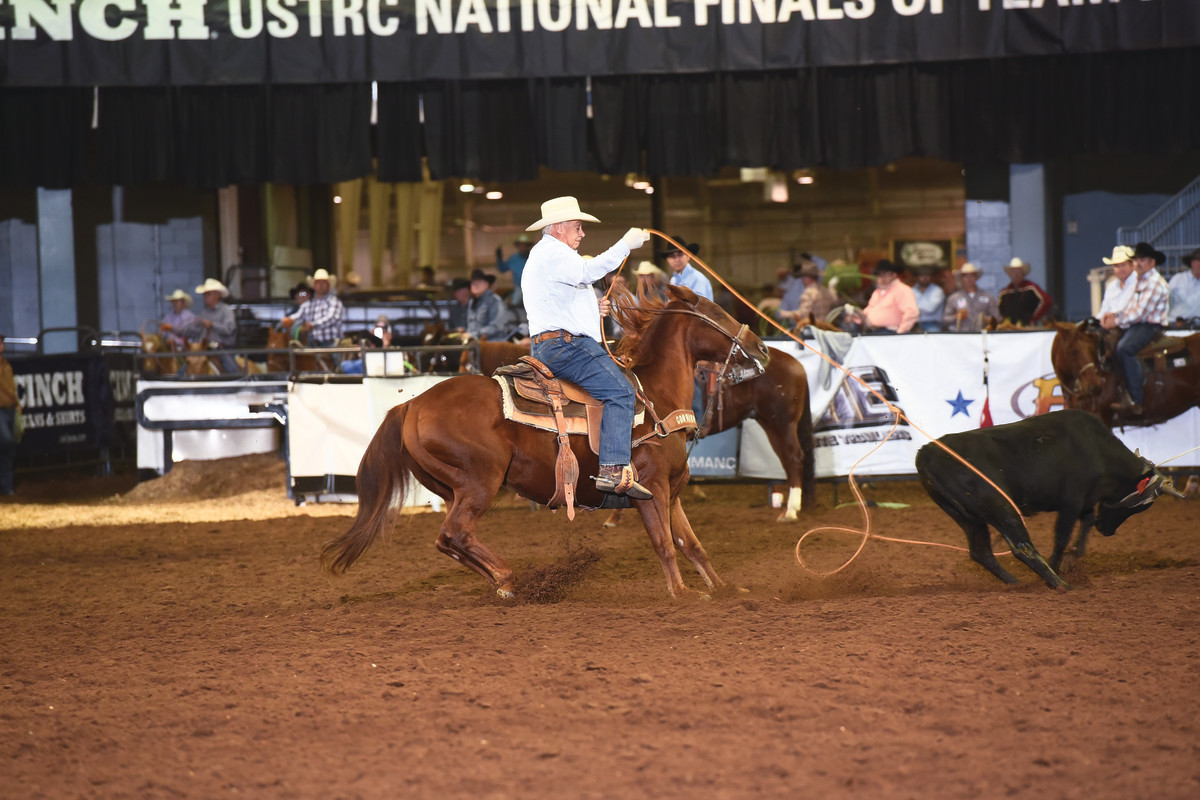
Because of the great cattle, reliable payout and professional quality, Baize prioritized taking his boys to the USTRC ropings throughout their careers, and fondly remembers his son Boedy winning the National Finals of Team Roping at age 14 back in 1999.
“I think he was about 2-foot-tall,” Baize laughed. “They asked him what he was going to do with his money, and he said, ‘Buy a boat!’ He’s 35 now, and he still wears that buckle.”
Barry Berg, 53, Texas
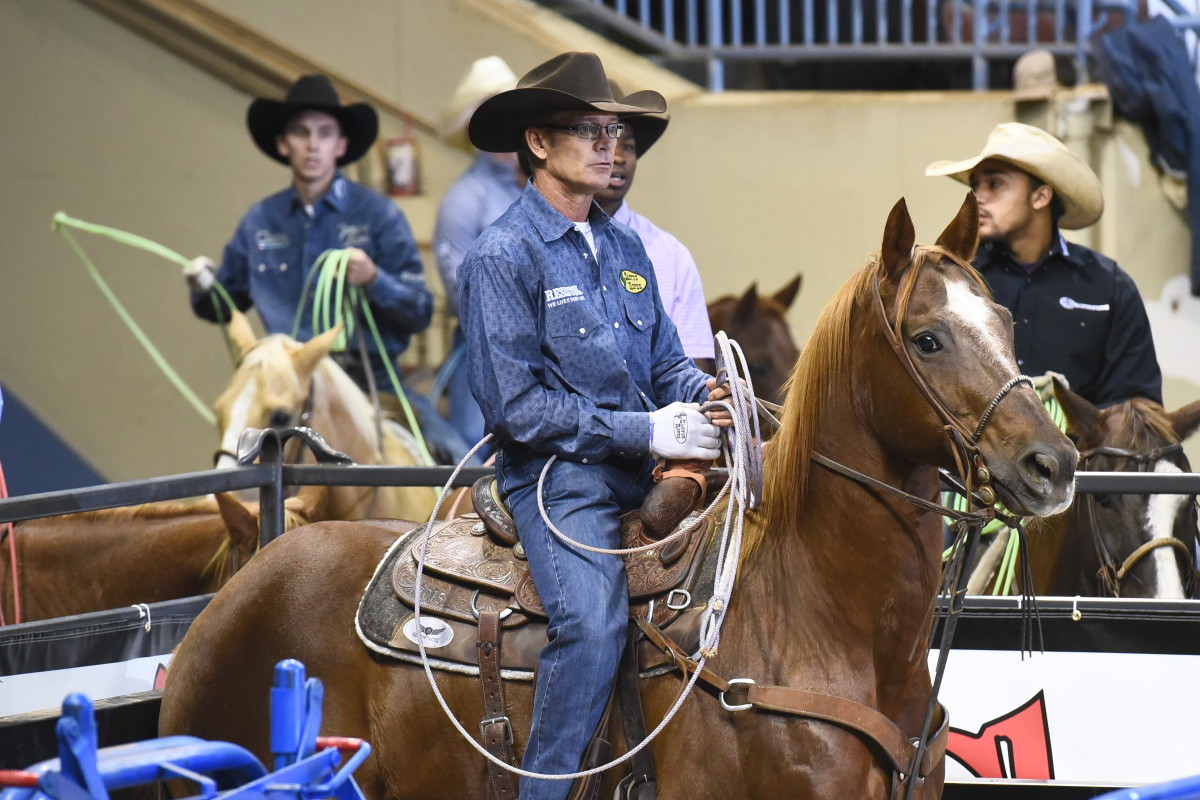
Barry Berg, now vice president of Cactus Ropes, was just a 24-year-old kid working in a feedlot when he showed up at his first US roping in San Angelo, Texas.
“I was at a four-for-$30 jackpot in South Texas,” Berg explained. “And this guy had some papers with him that said what everyone’s numbers were according to Denny’s system. I don’t even know how he got a hold of it, but I flipped through it and there was my number. I think I was a 4 in that system. And so I just figured I’d try it out, and I went to the first one.”
[READ MORE: The Rope Makers]
Berg was straight up on two but missed his third steer at that first roping. But he remembers seeing guys winning $4,000 to $5,000 and calling their bosses and quitting their feedlot jobs that day.
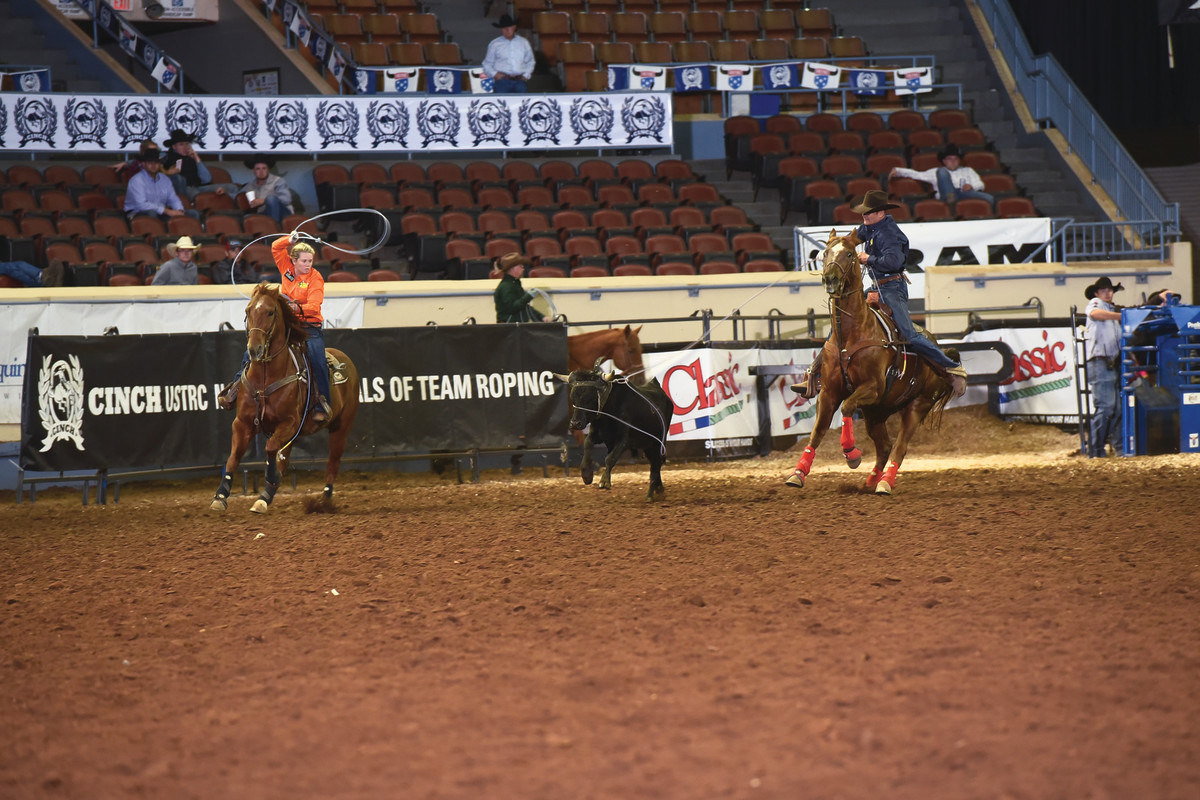
“He thought he’d be rich for the rest of his life,” Berg laughed. “I think I had $150 to my name, and I remember thinking what in the world I’d do with $5,000.”
Berg went to the first US Finals in Guthrie a day earlier than he needed to so he could watch the Open.
“It was mesmerizing. It was literally the year before Cactus Ropes was a vision. That was the driving factor behind Jack Stephenson starting Cactus—the appearance of an organization based on team roping. Cactus Ropes started the next year. At the time, I was 100% sure I was in the feedlot the rest of my life. And then came the team roping industry, and I can’t thank Jack Stephenson enough for what he did for me. I have the best job in the world.”
Ray Black, 79, Arkansas
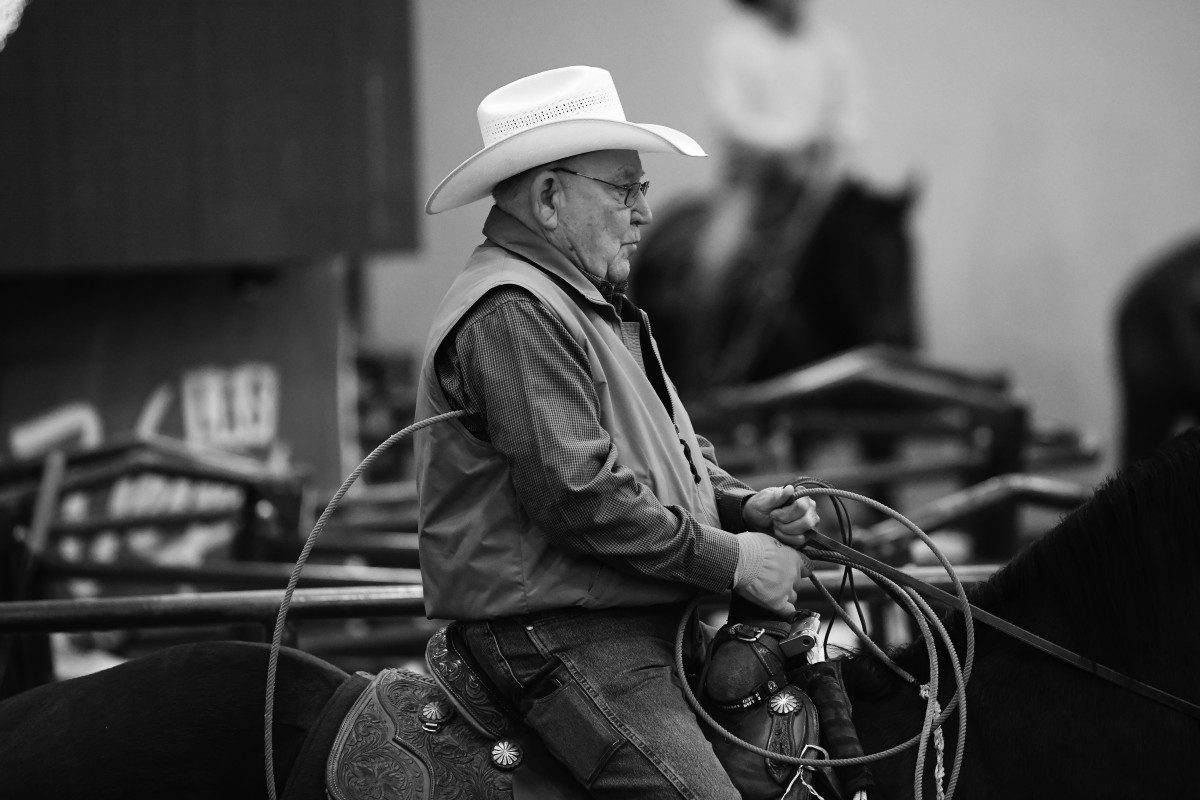
By 1990, Ray Black had already spent a lifetime in the arena. He roped calves in the 1950s and ’60s, and first saw team roping at the NFR back when it was in Oklahoma City. He got with some buddies back home and started the Arkansas Team Ropers Association in the early ’70s.
Black had heart trouble in 1989, so he didn’t get to rope at that first USTRC event his buddies went to in Eufaula, Oklahoma. But he did ride along just to see what it was all about. He wasn’t impressed with the number system and its complications, so he opted to miss the first National Finals of Team Roping in Guthrie.
“I got a call from Arkie Kiehne, and he told me they were having a finals there in Guthrie, and that it was $250 a man to enter and I needed to send my money two weeks before the roping,” Black said. “Between all the divisions, he wanted me to spend $2,000 in entry fees mailed to them, two weeks before the roping, and I’d show up and see whether they have the roping or not. I said ‘I’m not going.’ I didn’t know Denny Gentry at the time. They had the roping, and I heard what it did, and I realized I messed up. I bought me a card and started that next year.”

That pesky number system that initially turned Black off from the US ropings became a big part of his life, as he was on one of the initial numbering committees for the USTRC in Arkansas.
“I hated for them to ask me about somebody’s number,” Black said. “I hated to raise anyone, except for some wolf. I’d hate to raise some country boy who just roped on the weekends. I couldn’t hardly do it! But it was a great experience in my life.”
Black hasn’t missed a National Finals of Team Roping since that first year, and he won $18,550 back in 2004 when he won third in the #5 Shoot-Out with long-time partner Harold Jones. Now 79, Black still enters every roping he can get to.
Merrill Bond, 77, Colorado
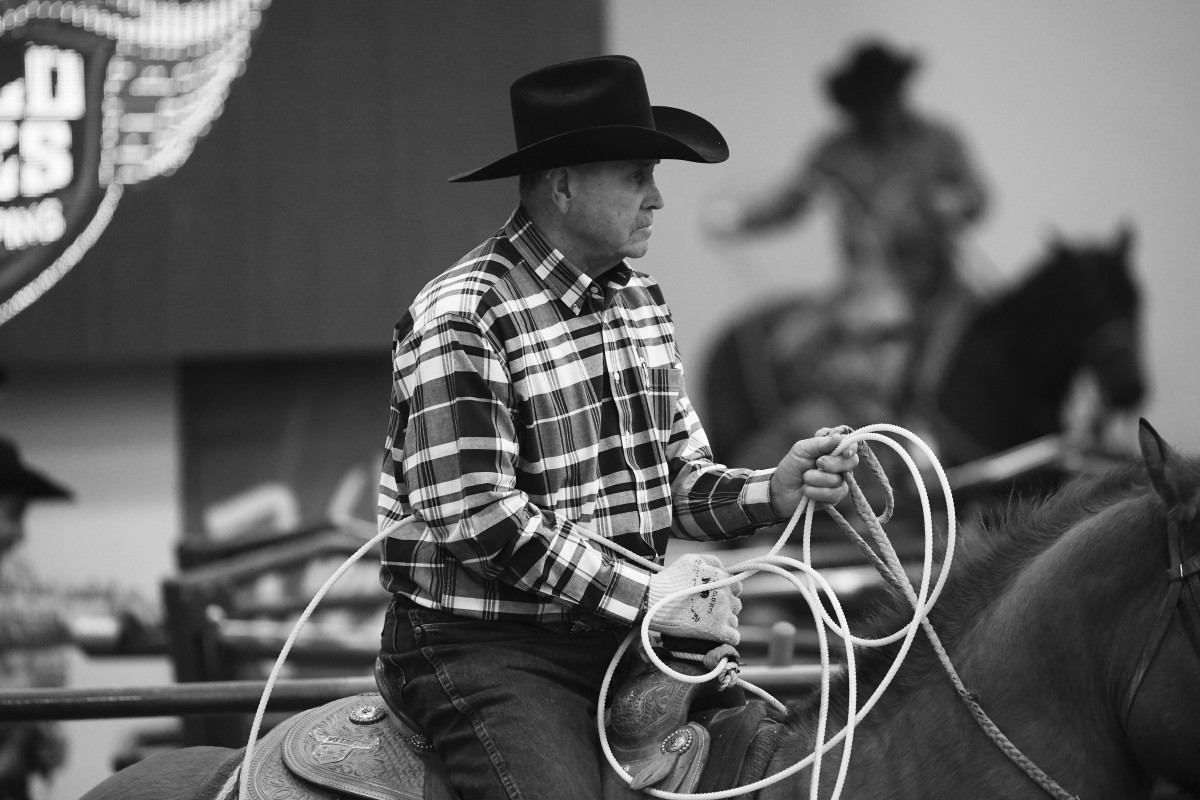
Merrill Bond joined the Rodeo Cowboys Association back in 1962, and he roped at the National Finals Rodeo in 1975, when the event’s total payout was $121,500. So when he showed up to rope in Guthrie in 1990 with his oldest son, he was pretty impressed.
“It was so great to get numbered because, before, we were just roping against the big boys,” Bond said. “I went that first year, and I’ve been to all now but two or three. I won second in the Gold Plus once with Jim Miles, but I’ve placed there several times. I’ve been trying to win first, but I haven’t yet, so I have to keep going.”
Bond did his part to help the sport grow, too. He was on the numbering committee in Colorado, helping establish numbers for the thriving roping community in the state. Today, he saves his money and his entering for USTRC and World Series of Team Roping events.
“I still just like to rope,” Bond said. “I like to rope for a lot of money now. I don’t go to little jackpots anymore.”
